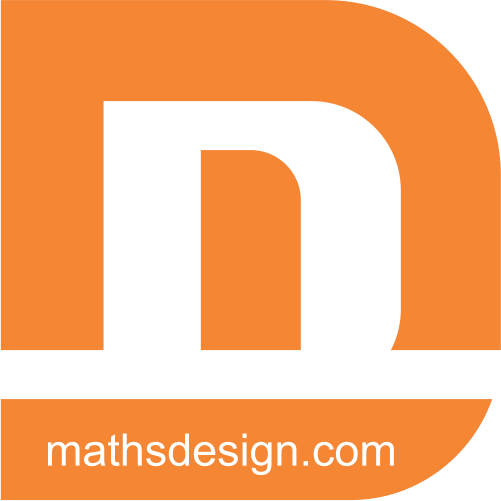Linear Algebra Symbols
Scalars:
- α, β, γ, …: Greek letters often used to represent scalar constants.
- a, b, c, …: Regular lowercase letters often used to represent scalar constants.
Vectors:
- v, u, w, …: Bold lowercase letters often used to represent vectors.
- v, u, w, …: Regular lowercase letters can also represent vectors, depending on the context.
- a, b, c, …: Additional bold lowercase letters for vector representation.
Matrices:
- A, B, C, …: Bold uppercase letters often used to represent matrices.
- M, N, P, …: Additional bold uppercase letters for matrix representation.
Matrix Elements:
- a<sub>ij</sub>, b<sub>ij</sub>, …: Element in the i-th row and j-th column of matrix A, B, …
- [a<sub>ij</sub>], [b<sub>ij</sub>], …: Element a<sub>ij</sub> enclosed in brackets, indicating the element’s position in the matrix.
Vector and Matrix Operations:
- +: Addition of vectors or matrices (e.g., u + v, A + B).
- -: Subtraction of vectors or matrices (e.g., u – v, A – B).
- *: Scalar multiplication (e.g., αv, βA).
- ⋅ (dot product): Inner product of vectors (e.g., u ⋅ v).
- × (cross product): Cross product of vectors (e.g., u × v).
- × (matrix multiplication): Multiplication of matrices (e.g., A × B).
- T (superscript): Transpose of a matrix (e.g., A<sup>T</sup>).
Linear Transformations:
- T, S, …: Often used to represent linear transformations.
- T(v), S(v), …: Linear transformation of vector v by transformation T, S, …
Special Matrices:
- I: Identity matrix.
- O: Zero matrix (all elements are zero).
- D: Diagonal matrix (non-diagonal elements are zero).
- A<sup>-1</sup>, B<sup>-1</sup>, …: Inverse of matrix A, B, …
- det(A), det(B), …: Determinant of matrix A, B, …
Vector Spaces:
- ℝ<sup>n</sup>: n-dimensional real vector space.
- ℂ<sup>n</sup>: n-dimensional complex vector space.
Subscripts and Superscripts:
- i, j, k, …: Commonly used indices for components of vectors and matrices.
- n, m: Indices representing dimensions of vectors and matrices.
- x<sub>i</sub>, y<sub>j</sub>, …: Components of vectors (e.g., v = [x<sub>1</sub>, x<sub>2</sub>, …]).
Other Symbols:
- 0: Zero vector or zero matrix.
- 1: Vector or matrix of all ones.
- =: Equality (e.g., u = v).
- ≠: Inequality (e.g., u ≠ v).
Please note that the symbols’ meanings and usage may vary depending on the specific context and notation conventions used in different texts or courses. This list provides a comprehensive overview of common linear algebra symbols and their meanings.
Linear Algebra Symbols with Symbol Name , Meaning and definition and also with Example:
Here’s a table with the linear algebra symbols you mentioned, along with their symbol names, meanings/definitions, and examples:
| Symbol | Symbol Name | Meaning / Definition | Example |
|---|---|---|---|
| ⋅ | Dot Product | Inner product of vectors | u ⋅ v = u<sub>1</sub>v<sub>1</sub> + u<sub>2</sub>v<sub>2</sub> + … |
| × | Cross Product | Vector product of two vectors (3D) | u × v |
| ⊗ | Tensor Product | Multiplies two tensors to create a larger tensor | A ⊗ B |
| ∙ | Inner Product | Another notation for inner product | u ∙ v |
| [a<sub>ij</sub>] | Brackets | Denotes a matrix element at the i-th row, j-th column | [A] = [[2, 0], [1, 3]] |
| (a<sub>ij</sub>) | Parentheses | Can be used to denote matrix elements | (A) = [[2, 0], [1, 3]] |
| det(A) | Determinant | Scalar value representing the volume scaling factor | det(A) = 6 |
| ‖ | Double Vertical Bars | Denotes vector/matrix norm | ‖v‖ = √(v<sub>1</sub>² + v<sub>2</sub>² + …) |
| AT | Transpose | Switches rows and columns of a matrix | (AT)ij = (A)ji |
| A† | Hermitian Matrix | A matrix equal to its conjugate transpose | (A†)ij = (A)ji |
| A -1 | Inverse Matrix | Matrix that, when multiplied, gives the identity | (A*)ij = (A)ji |
| rank(A) | Matrix Rank | Maximum number of linearly independent rows/columns | rank(A) = 2 |
| dim(V) | Dimension | Number of linearly independent vectors in a space | dim(V) = 3 |

Recent Comments